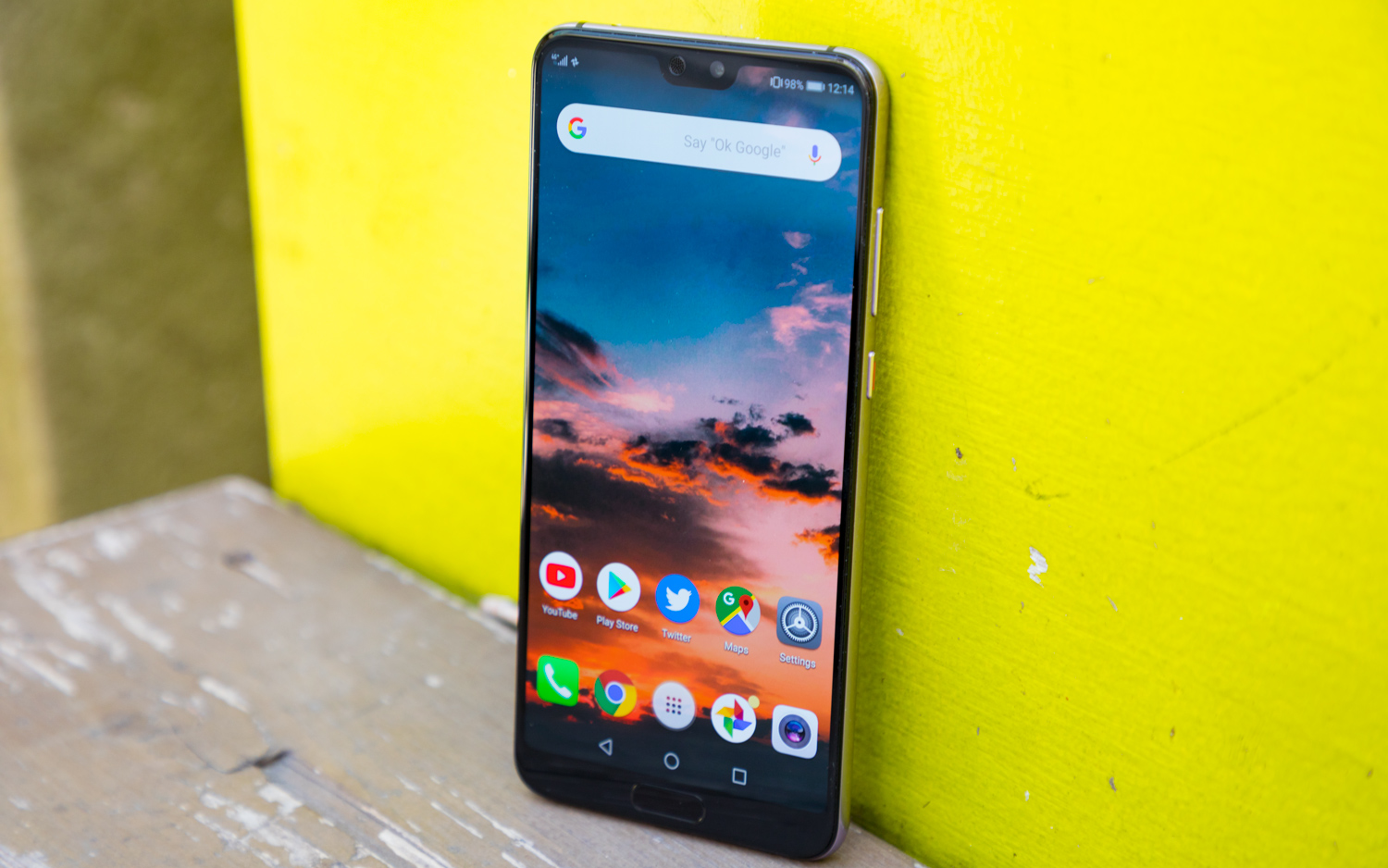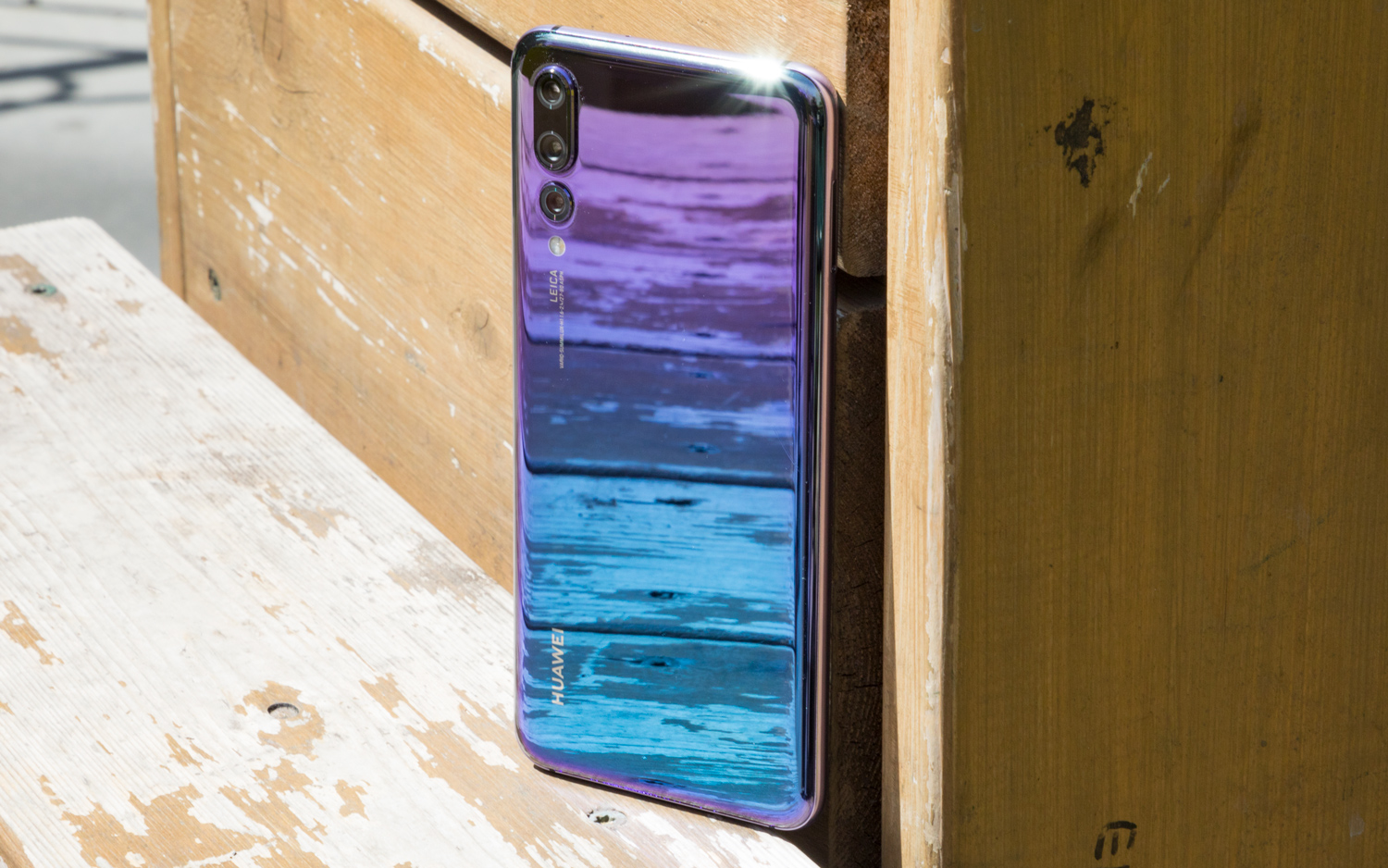We Tried an Overseas Phone on a US Network: Here's What Happened
Considering importing a new superphone from the likes of Huawei or Vivo, but not quite sure what kind of service you can expect? Read this first.

Some intriguing smartphones have emerged in 2018, from Huawei’s triple-camera P20 Pro to the Vivo Nex, and its borderless screen with pop-up camera. The bad news? A lot of these innovative devices are skipping the U.S. market. But there's some good news, too: if you're willing to import one of these phones, there's a chance it will work on U.S. cellular networks just fine, provided the phone supports the same bands that your favorite wireless carrier does.
That's what we discovered when we tested out the P20 Pro and its ability to work with U.S. cellular networks. The international version of the P20 Pro (model CLT-L29) supports most bands associated with stateside GSM networks. That means when you put an AT&T or T-Mobile SIM in the device, you should experience the same service you’re accustomed to from a supported phone.

The operative word there is “should.” In our guide for importing the P20 Pro, we discussed that Huawei’s new flagship can receive all of AT&T’s bands and all but two of T-Mobile’s — bands 66 and 71. You’d imagine that would be problematic for T-Mobile subscribers, but as it turns out, those bands are quite new in the carrier’s repertoire and haven’t been deployed in many areas. Most popular high-end phones, including the iPhone X and Google Pixel 2, don’t support band 71 yet either.
With that in mind, we wanted to see what you really miss out on — if anything — when using a P20 Pro on a U.S. carrier, compared to a fully supported device like Samsung’s Galaxy S9. We put an AT&T SIM card in both phones and headed to a handful of locations around New York, New Jersey and Pennsylvania, running speed and signal tests to determine any noticeable difference. The results were pleasantly surprising.
Before we get into it though, here’s how we tested. To measure downloads, uploads and ping, we ran the OpenSignal app. Ping was recorded in milliseconds, and represents the length of time between the phone sending a request to a server and getting feedback. A shorter time indicates a more responsive connection. To determine signal strength, we turned to Signal Spy. The latter was measured in dBm (decibels per milliwatt) with lower numbers indicate higher quality connections.
| Location | S9 Network | S9 Down/Up | S9 Ping | P20 Network | P20 Down/Up | P20 Ping |
| Holland, PA at 4:30 PM | LTE | 64.1 Mbps down; 12.4 Mbps up | 34 ms | LTE | 27.6 Mbps down; 12.2 Mbps up | 27 ms |
| Ewing, NJ at 11 PM | LTE | 17.7 Mbps down; 1.4 Mbps up | 46 ms | LTE | 6.6 Mbps down; 4.3 Mbps up | 35 ms |
| Cranbury, NJ at 7:30 AM | HSPA+ | 2.3 Mbps down; 120 kbps up | 54 ms | LTE | 25.4 Mbps down; 8.8 Mbps up | 29 ms |
| New York, NY (Bryant Park) at 10:45 AM | LTE | 2.5 Mbps down; 913 kbps up | 47 ms | LTE | 1.0 Mbps down; 4.8 Mbps up | 41 ms |
| New York, NY (East Village) at 12 PM | LTE | 5.9 Mbps down; 798 kbps up | 51 ms | LTE | 2.1 Mbps down; 1.3 Mbps up | 88 ms |
For starters, there was never a significant discrepancy in signal strength. In every trial, the phones were within 1 dBm of each other — except for one case, on a train through a rural stretch of central New Jersey. There, the P20 Pro managed to connect to LTE while the S9 couldn’t. However, the S9 demonstrated a stronger connection to T-Mobile’s HSPA+ network, pulling -89 dBm versus -102 dBm on the P20 Pro. The S9’s recorded data speeds were still much slower because it wasn’t using LTE, though. The P20 Pro delivered 25.4 Mbps downloads and 8.8 Mbps uploads, while the S9 topped out at 2.3 Mbps down and only 120 kbps up.
| Location | S9 Signal Strength | P20 Signal Strength |
| Holland, PA at 4:30 PM | -102 dBm | -101 dBm |
| Ewing, NJ at 11 PM | -113 dBm | -113 dBm |
| Cranbury, NJ at 7:30 AM | -89 dBm | -102 dBm |
| New York, NY (Bryant Park) at 10:45 AM | -105 dBm | -104 dBm |
| New York, NY (East Village) at 12 PM | -104 dBm | -104 dBm |
While the P20 Pro never once failed to connect to LTE and didn’t exhibit poorer connectivity, it averaged slower downloads and faster uploads than the S9 in the majority of trials. The gap was at times noticeable, though it would be a stretch to call the P20 Pro’s data pedestrian relative to the S9’s. Although we cannot say for certain, this could simply be attributed to the differences between the LTE modems in each phone.
Get instant access to breaking news, the hottest reviews, great deals and helpful tips.
For example, in one Pennsylvanian suburb, Samsung’s device topped out at 64.1 Mbps down, while Huawei’s managed just 27.6 Mbps. In New York City, the P20 Pro’s downloads were a little less than half the speed of the S9’s in two separate locations. Where the S9 got 2.5 Mbps and 5.9 Mbps, the P20 Pro reached 1 Mbps and 2.1 Mbps.

In real world usage, that pretty much amounts to a hiccup here and there on the P20 Pro that you might not otherwise experience on the S9. Personally, I didn’t find the slightly slower data to be a dealbreaker in my time with both devices, and calls remained crystal clear everywhere we took the P20 Pro. But if having the fastest speeds is very important to you, you might want to skip Huawei’s latest offering.
The good news is most American users who want the P20 Pro can still get it and enjoy a great experience, provided they’re comfortable parting ways with more than $1,100. Still, if you live in another part of the country — like the Midwest, where band 71 is expected to improve coverage in rural areas — the P20 Pro may not perform as well. And if something goes wrong with your device, don’t count on any support from your carrier or the manufacturer.
Bottom Line
Keep in mind that performance can vary from smartphone model to smartphone model, so not every international phone is going to perform the same way as the P20 Pro did in our testing. (That said, the Vivo Nex does happen to support the same AT&T-favored bands that the P20 Pro does.) Before importing an international device, check out its specs to see which 3G and LTE bands it supports and match them against the ones that your preferred carrier offers.
As for the P20 Pro, if you’re curious how to snag one yourself, be sure to check out our dedicated buying guide, as well as our explainer on using international phones on U.S. networks.
Photo Credit: Shaun Lucas/Tom's Guide
Adam Ismail is a staff writer at Jalopnik and previously worked on Tom's Guide covering smartphones, car tech and gaming. His love for all things mobile began with the original Motorola Droid; since then he’s owned a variety of Android and iOS-powered handsets, refusing to stay loyal to one platform. His work has also appeared on Digital Trends and GTPlanet. When he’s not fiddling with the latest devices, he’s at an indie pop show, recording a podcast or playing Sega Dreamcast.
-
eric.s.periard Who cares about the damn camera, with about processing power, display type, memory, gpu...Reply
